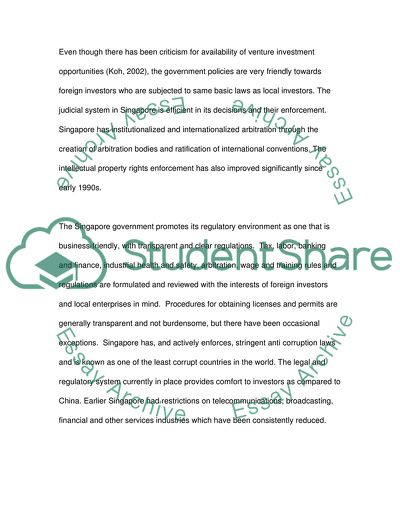Cite this document
(Venture Capital and Economic Growth: Singapore's Experience Case Study, n.d.)
Venture Capital and Economic Growth: Singapore's Experience Case Study. Retrieved from https://studentshare.org/macro-microeconomics/1539508-financing-risk-opportunities-of-singapore-limitation-and-future-prospect-of-that-6-asian-countriesareas
Venture Capital and Economic Growth: Singapore's Experience Case Study. Retrieved from https://studentshare.org/macro-microeconomics/1539508-financing-risk-opportunities-of-singapore-limitation-and-future-prospect-of-that-6-asian-countriesareas
(Venture Capital and Economic Growth: Singapore'S Experience Case Study)
Venture Capital and Economic Growth: Singapore'S Experience Case Study. https://studentshare.org/macro-microeconomics/1539508-financing-risk-opportunities-of-singapore-limitation-and-future-prospect-of-that-6-asian-countriesareas.
Venture Capital and Economic Growth: Singapore'S Experience Case Study. https://studentshare.org/macro-microeconomics/1539508-financing-risk-opportunities-of-singapore-limitation-and-future-prospect-of-that-6-asian-countriesareas.
“Venture Capital and Economic Growth: Singapore'S Experience Case Study”. https://studentshare.org/macro-microeconomics/1539508-financing-risk-opportunities-of-singapore-limitation-and-future-prospect-of-that-6-asian-countriesareas.


